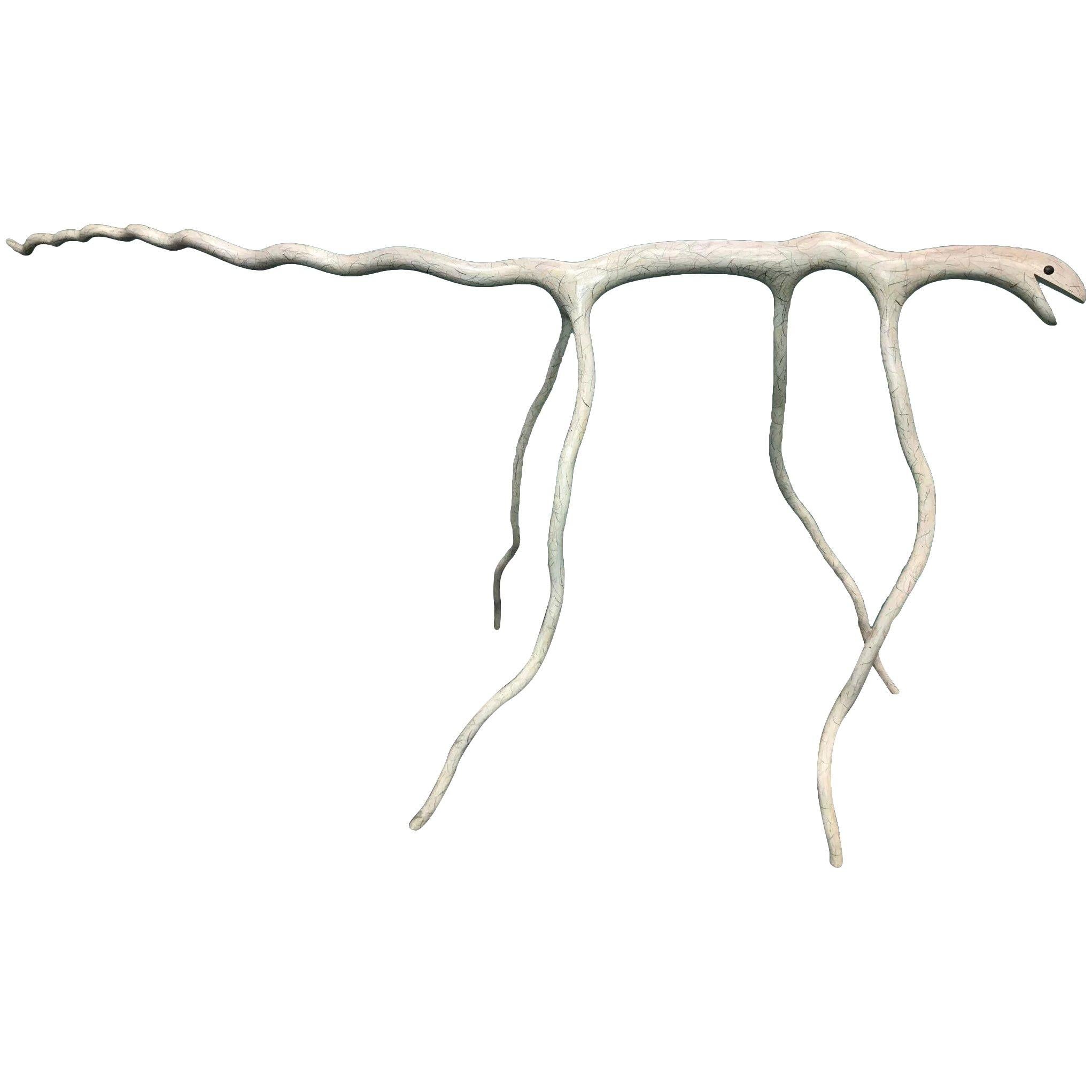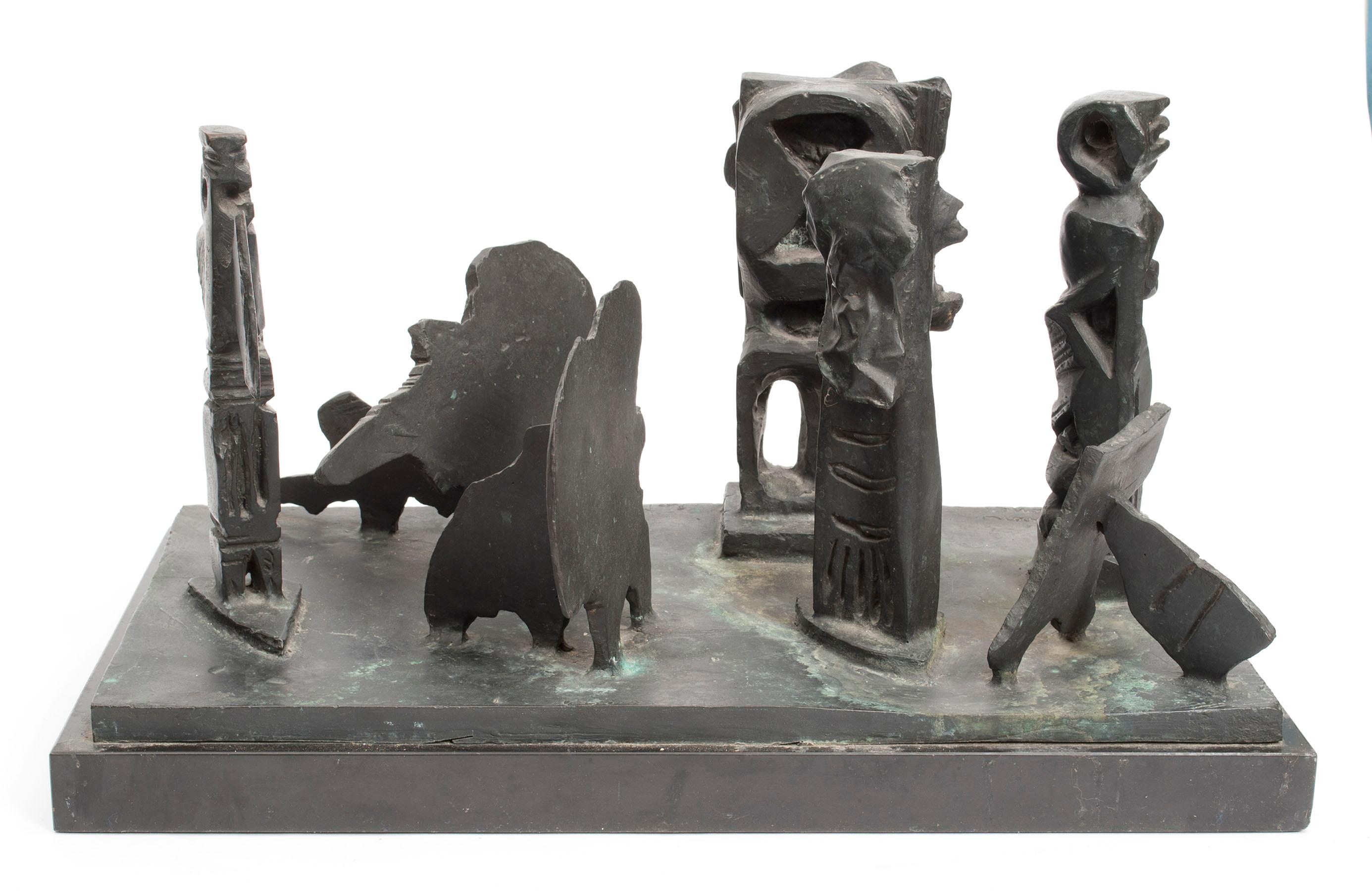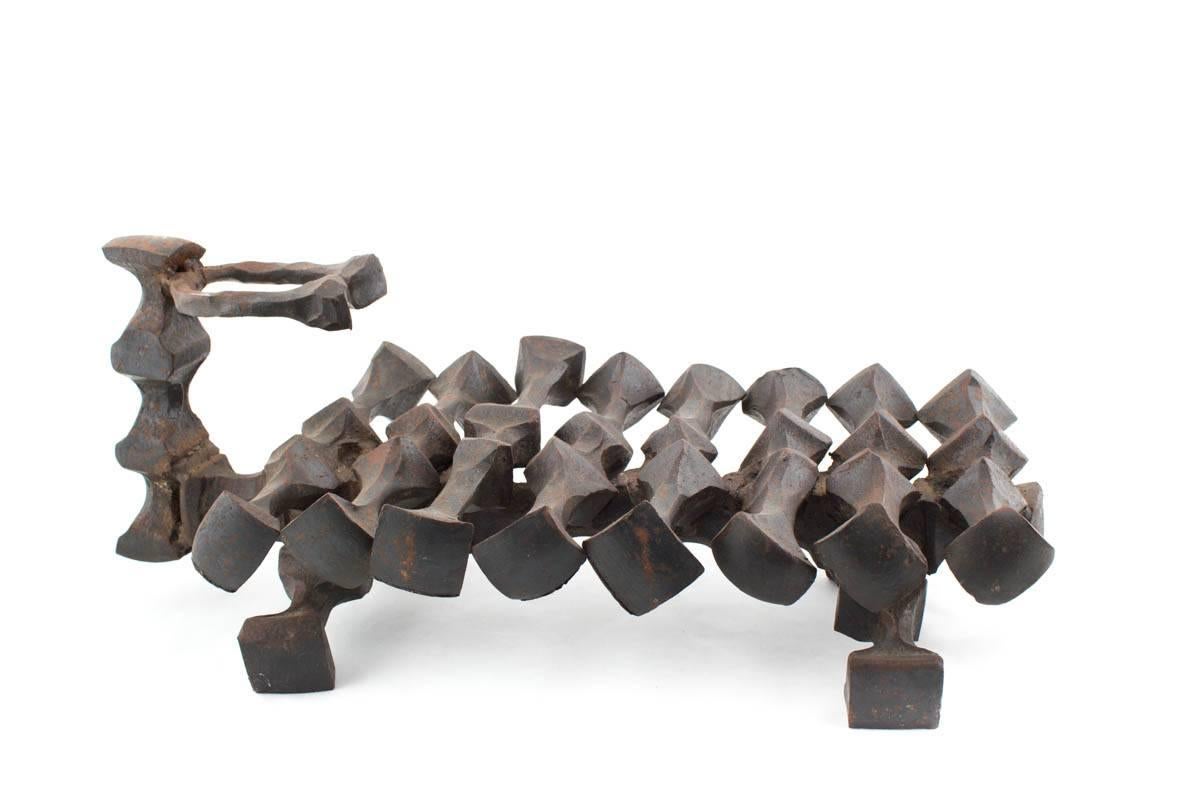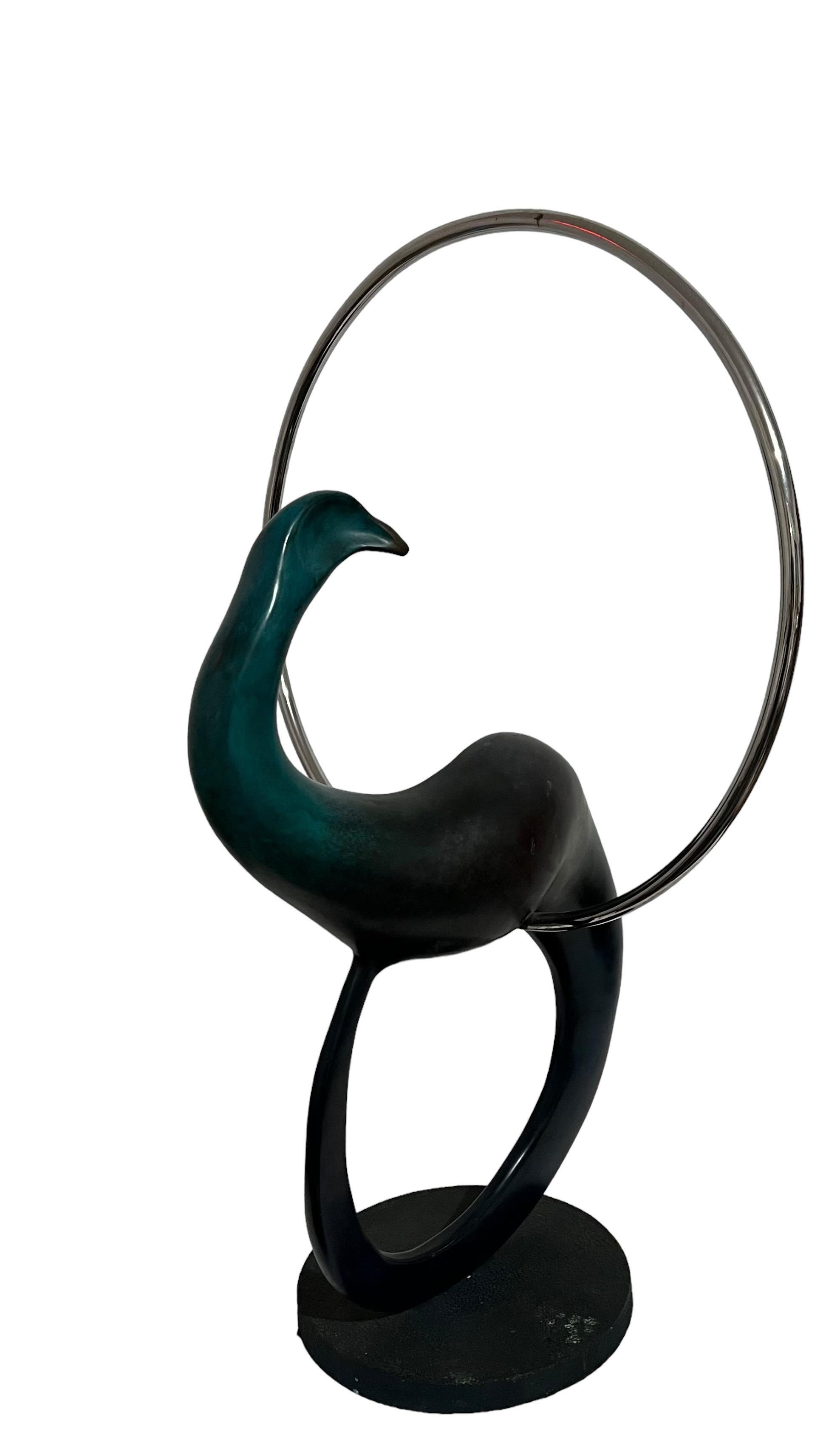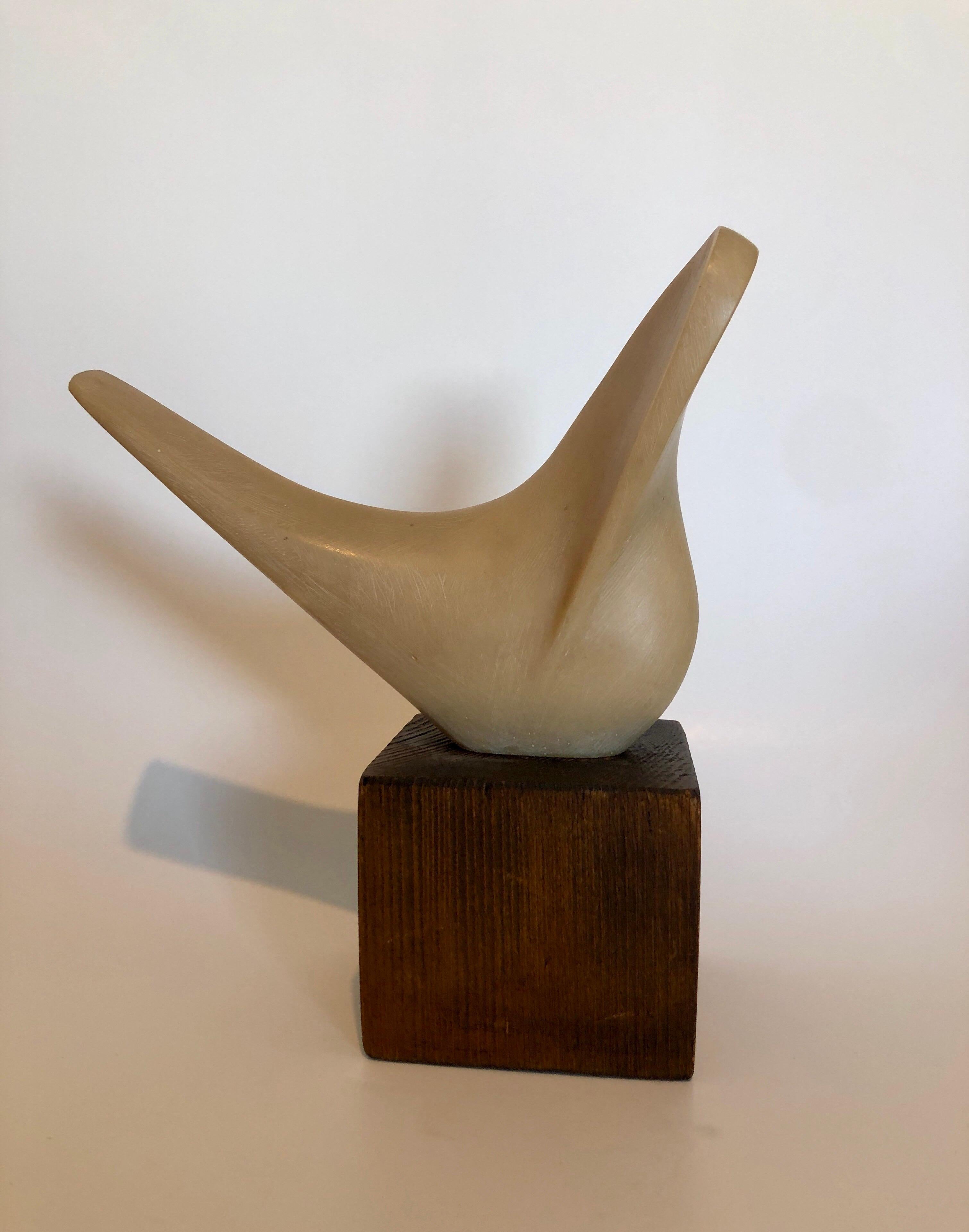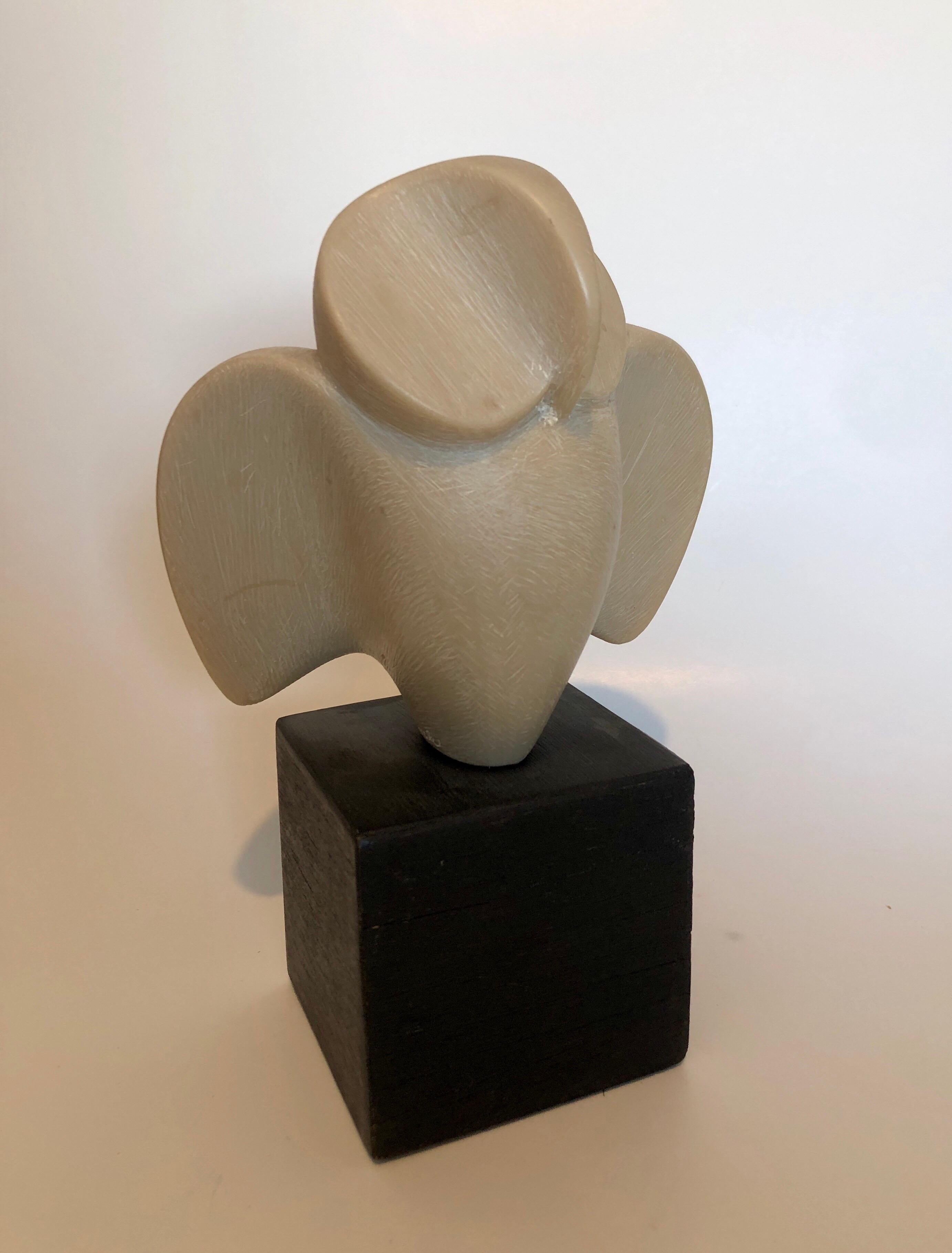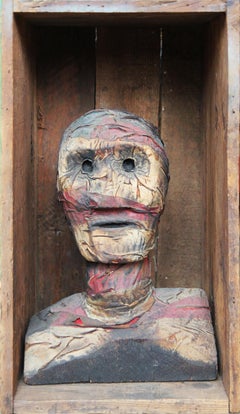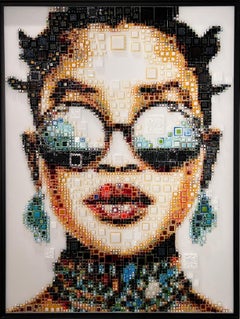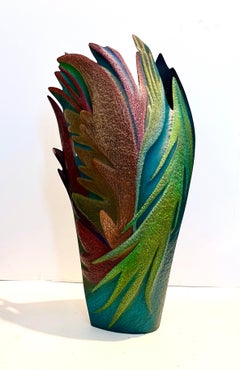Monumental Modigliani Style Gaia Mother Earth Sculpture
View Similar Items
Want more images or videos?
Request additional images or videos from the seller
1 of 10
UnknownMonumental Modigliani Style Gaia Mother Earth Sculpture
About the Item
- Dimensions:Height: 43 in (109.22 cm)Width: 28 in (71.12 cm)Depth: 28 in (71.12 cm)
- Medium:
- Movement & Style:
- Period:
- Condition:
- Gallery Location:Houston, TX
- Reference Number:Seller: CA94.2020.0616.20391stDibs: LU55136333292

About the Seller
5.0
Vetted Seller
These experienced sellers undergo a comprehensive evaluation by our team of in-house experts.
Established in 1969
1stDibs seller since 2014
783 sales on 1stDibs
Typical response time: 9 hours
More From This SellerView All
- Modern Texas Mixed Media Sculpture of a Mummified Portrait Bust in a Box / CrateBy Roy FridgeLocated in Houston, TXModern mixed media sculpture by Texas artist Roy Fridge. The work features a mummified portrait bust encased in a red, white, and blue flag placed in a wooden box or crate. Artist Biography: A native of Beeville, Fridge was an only child who made his own toys. After serving in the U.S. Navy, he graduated from Baylor University in Waco with a degree in filmmaking. In the 1960s, he and his best friends, sculptors Jim Love and Dave McManaway, became known as the "unholy trio" of Texas contemporary art. In 1963, Fridge left a career in television advertising and "ran away to the beach." He settled in the sleepy town of Port Aransas...Category
Mid-20th Century Modern Abstract Sculptures
MaterialsMixed Media
- Modern Brutalist Metal Sculpture of an Abstract Skeletal Figure in a LockerBy Bob FowlerLocated in Houston, TXModern abstract brutalist metal sculpture by Houston artist Bob Fowler. The work features a skeletal figure welded in a box or locker. Firmly attached to a white and natural wood bas...Category
1960s Modern Abstract Sculptures
MaterialsMetal
- Square Wood Window SculptureBy David NashLocated in Houston, TXOrganic sculpture by famous sculptor David Nash of a tree trunk that has been shaped into a square with a concentric square cut out in the middle. Artist Biography: David Nash is a British sculptor and Land artist and works primarily with natural materials and live trees. His wooden sculptures are made using heavy equipment including chainsaws and blowtorches, morphing trees into unexpected shapes such as his Oculus Block (2010), a melding of two Eucalyptus stumps into a solid square. Born on November 14, 1945 in Esher, England, he attended the Kingston College of Art and later the Chelsea School of Art. Among his first and best-known works is Ash Dome (1977), for which the artist planted a circle of ash trees to form a wooden dome...Category
1970s Modern Abstract Sculptures
MaterialsWood
Price Upon Request - Abstract Figurative Marble Scuplture Signed Mario C: G:Located in Houston, TXAbstract figurative grey marble sculpture that incorporates a variety of human appendages (nose, feet, and fingers). The base is signed "MARIO C ...Category
20th Century Abstract Abstract Sculptures
MaterialsMarble
- "Julie" Modern Abstract Bronze Female Bust Portrait Sculpture of Julie BurrowsLocated in Houston, TXModern abstract bronze portrait bust sculpture by Houston, Texas artist David Adickes. The work is modeled after Adickes' friend, Julie Burrows, and features sharp facial features an...Category
2010s Abstract Figurative Sculptures
MaterialsBronze
- Seated Thinking Women in a Long DressBy Jose ZacariasLocated in Houston, TXFigurative sculpture of a thinking women seated. Women appears to be in a long dress. The stone has natural tones that come out with the carvings of the sculpture.Category
1980s Naturalistic Figurative Sculptures
MaterialsStone
You May Also Like
- WoppiBy Isabelle ScheltjensLocated in Miami, FLIsabelle Scheltjens’ elegant glass portraits celebrate materiality. Growing up with a love of pop art, Scheltjens infused her passion with natural talent and years of education at SI...Category
2010s Pointillist Figurative Sculptures
MaterialsGlass, Mosaic
Price Upon Request - Helen Shirk Sculpture Hand Crafted Studio Vessel, Copper Patina, Colored PencilsLocated in Surfside, FLTitle: Red Pod, CV110V, San Diego, 1997 Fabricated, hammered copper, colored pencils, patina. This is not signed. It bears a label on the interior and the artist has kindly confirmed the attribution to me. Helen Shirk...Category
1990s American Modern Abstract Sculptures
MaterialsCopper
- Root CreatureLocated in Milford, NHA unique root creature sculpture made from lacquered wood with colored pencil by American artist Jon Brooks (20th century). Brooks was born in Manchester, N...Category
Late 20th Century Abstract Figurative Sculptures
MaterialsWood, Color Pencil
- Abstract Metal Sculpture Navajo Native American Indian Art Woman Pollen KeeperBy Melanie YazzieLocated in Surfside, FLMelanie Yazzie (1966-) Pollen Keeper II (maquette) Powder-coated metal, 2008 Hand signed, titled, dated and numbered 2/30, attributed, titled, dated and numbered again to paper label Mounted to a white composition plinth Provenance: The Freund Family Collection Melanie Yazzie is a Navajo sculptor, painter, printmaker, and professor. She teaches at the University of Colorado at Boulder. Yazzie was born in 1966 in Ganado, Arizona, United States. She is Navajo of the Áshįįhí, born for Tó Dichʼíinii. She grew up on the Navajo Nation. Although she grew up on the Navajo Nation, Melanie Yazzie is of the Salt Water Clan born for the Bitter Water Clan. She first studied art at the Westtown School in Pennsylvania. Yazzie earned a BA in Studio Art with a minor in Spanish from Arizona State University in 1990 and an MFA in printmaking from the University of Colorado at Boulder in 1993. Melanie Yazzie works a wide range of media that include printmaking, painting, sculpting, and ceramics, as well as installation art. Her art is accessible to the public on many levels and the main focus is on connecting with people and educating people about the contemporary status of one indigenous woman and hoping that people can learn from her experience. Her subject matter is significant because the serious undertones reference native postcolonial dilemmas. Melanie's work focuses primarily on themes of indigenous people. Her work often brings images of women from many indigenous cultures to the forefront. Thus her work references matrilineal systems and points to the possibility of female leadership. Yazzie is known for her multilayered monotype prints that focus on storytelling and reflect her dreamtime friends and companions. The works are filled with colors and textures that reflect different world. The works are made with stencils and often she is printing with soy based inks called Akua inks that are safe for the artist and the environment. The works most often are printed on Arches 88 due to the absorbing quality of that 100% rag paper. It is a fine art paper made in France and very soft to the touch. It is a paper designed originally for screen printing but is the perfect surface for many of the works Yazzie creates. The works often are monotypes as opposed to monoprints. So the works are a one of a kind work of art and not made in multiples. She is a Professor and Head of Printmaking at the University of Colorado at Boulder. She teaches printmaking courses and travels extensively to indigenous communities within the United States and abroad. She can always be found through the University of Colorado Art and Art History Department. In addition to teaching at the Institute of American Indian Arts, the College of Santa Fe (now Santa Fe University of Art and Design), Boise State University, and the University of Arizona, Yazzie has taught at the Pont Aven School of Contemporary Art in France. Yazzie has led over 100 international print exchanges over a 20-year time period. Many of these exchanges include artists from Siberia, Japan, New Zealand, Australia, Canada, Mexico, and Germany. In 2012, the Denver Art Museum welcomed Yazzie as artist-in-residence, making her the first in the Native Arts department. A selection of major exhibitions from the 1990s to present include "Between Two Worlds" (2008) at Arizona State University, "Traveling" at the Heard West Museum (2006), "About Face: Self-Portraits by Native American, First Nations, and Inuit Artists" at the Wheelwright Museum (2005), "Making Connections" (2002) in Bulova, Russia, "Navajo in Gisborne" (1999) in Gisborne, New Zealand and "Watchful Eyes" (1994) at the Heard Museum. In September 2013 she co-curated the exhibition "Heart Lines: Expressions of Native North American Art" in Colorado University Art Museum, partially based on her private collection and including her work "Pollen Girl". Artists featured: Norman Akers, Maile Andrade, Kenojuak Ashevak, Pitseolak Ashoona, Corwin Clairmont, Jimmie Durham...Category
Early 2000s Contemporary Abstract Sculptures
MaterialsMetal
- Brutalist Modern Abstract Bronze Sculpture Metropolis Manner of Louise NevelsonBy Abbott PattisonLocated in Surfside, FLA very heavy, massive bronze sculpture by an important Chicago sculptor. Signed and marked "Firenze" with "Fuse Marinelli". METROPOLIS. Seven abstract shapes on black marble base. 1...Category
20th Century Modern Abstract Sculptures
MaterialsMarble, Bronze
- The Test, Assembled Kinetic Modernist Sculpture Puzzle ConstructionBy William King (b.1925)Located in Surfside, FL"The Test," 1970 Aluminum sculpture in 5 parts. Artist's cipher and AP stamped into male figure, front, 20 5/16" x 12 1/2" x 6 5/7" (approx.) American sculptor King is most noted for his long-limbed figurative public art sculptures depicting people engaged in everyday activities such as reading or conversing. He created his busts and figures in a variety of materials, including clay, wood, metal, and textiles. William Dickey King was born in Jacksonville, Florida. As a boy, William made model airplanes and helped his father and older brother build furniture and boats. He came to New York, where he attended the Cooper Union and began selling his early sculptures even before he graduated. He later studied with the sculptor Milton Hebald and traveled to Italy on a Fulbright grant. Mr. King worked in clay, wood, bronze, vinyl, burlap and aluminum. He worked both big and small, from busts and toylike figures to large public art pieces depicting familiar human poses — a seated, cross-legged man reading; a Western couple (he in a cowboy hat, she in a long dress) holding hands; a tall man reaching down to tug along a recalcitrant little boy; a crowd of robotic-looking men walking in lock step. Mr. King’s work often reflected the times, taking on fashions and occasional politics. In the 1960s and 1970s, his work featuring African-American figures (including the activist Angela Davis, with hands cuffed behind her back) evoked his interest in civil rights. But for all its variation, what unified his work was a wry observer’s arched eyebrow, the pointed humor and witty rue of a fatalist. His figurative sculptures, often with long, spidery legs and an outlandishly skewed ratio of torso to appendages, use gestures and posture to suggest attitude and illustrate his own amusement with the unwieldiness of human physical equipment. His subjects included tennis players and gymnasts, dancers and musicians, and he managed to show appreciation of their physical gifts and comic delight at their contortions and costumery. His suit-wearing businessmen often appeared haughty or pompous; his other men could seem timid or perplexed or awkward. Oddly, or perhaps tellingly, he tended to depict women more reverentially, though in his portrayals of couples the fragility and tender comedy inherent in couplehood settled equally on both partners. His first solo exhibit took place in 1954 at the Alan Gallery in New York City. King was elected to the American Academy of Arts and Letters in 2003, and in 2007 the International Sculpture Center honored him with the Lifetime Achievement in Contemporary Sculpture Award. Mr. King’s work is in the collections of the Metropolitan Museum of Art, Guggenheim Museum, Whitney Museum and the Museum of Modern Art in New York and the Hirshorn Museum at the Smithsonian American Art Museum in Washington, among other places, and he had dozens of solo gallery shows in New York and elsewhere. Reviews of his exhibitions frequently began with the caveat that even though the work was funny, it was also serious, displaying superior technical skills, imaginative vision and the bolstering weight of a range of influences, from the ancient Etruscans to American folk art to 20th-century artists including Giacometti, Calder and Elie Nadelman. The New York Times critic Holland Cotter once described Mr. King’s sculpture as “comical-tragical-maniacal,” and “like Giacomettis conceived by John Cheever.”Category
1970s American Modern Figurative Sculptures
MaterialsMetal


